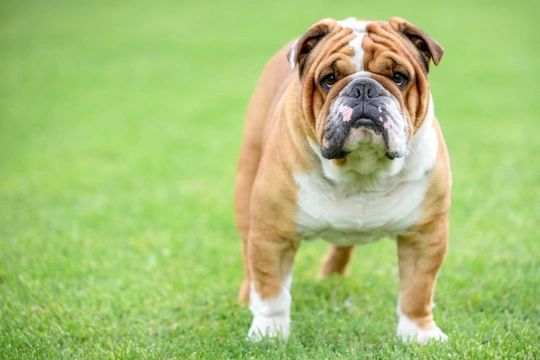
Ectropion in brachycephalic dogs
Ectropion is an eye condition that can affect a wide range of different types of dogs, and it is a conformation defect that is hereditary rather than something contagious or that can be caught and passed on from other dogs by means of direct contact with each other.
Ectropion can develop in any dog, but it is far more common within certain breeds than others, and many of the dog breeds that are commonly affected by ectropion are brachycephalic, or flat-faced dog breeds.
This article will outline the basics of ectropion in brachycephalic dog breeds, including what ectropion actually is, why some breeds are at higher risk of developing it, and what can be done about it. Read on to learn more.
What is ectropion?
Ectropion is the name given to a conformation defect that results in the dog’s lower eyelids turning outwards away from the eyeball, making their eyes look droopy and tired, and displaying the red mucous membrane on the inside of the eyelid itself.
What sort of dog breeds are at risk of ectropion?
Ectropion is something that is perhaps most prominent and obvious in dog breeds like the Basset hound and the Saint Bernard, breeds for which eyes of this type make up part of their physical appearance.
However, ectropion in brachycephalic dogs is very common too, and develops in many dogs of brachycephalic breeds as a result of the flatness of their faces and how this affects the position and function of their eyes.
Some of the brachycephalic dog breeds that are at higher risk of ectropion are the English bulldog, Pug, French bulldog, and other breeds that tend to have very exaggerated flat faces.
Why are brachycephalic dogs at higher risk of ectropion?
Dogs as a species did not evolve with flat faces in certain breeds; this is something we as humans have achieved with selective breeding, and is a trait that would quickly be bred out via natural selection in the wild.
Such a trait gives dogs a lower chance of survival; in some cases making them physically unable to mate and birth their young without assistance in the vast majority of cases, as well as making it unlikely such dogs would be able to hunt and protect themselves effectively.
This means that those popular flat faces come at a cost, which is paid by the dogs themselves, in terms of their health and quality of life in some cases.
Moderate brachycephalic dogs whose faces are not overly flat and whose nostrils are open generally enjoy good health and a normal lifestyle, but the flatter the dog in question’s face is, the more issues come with it – like potential ectropion, as the flatness of the face affects the shape and construction of the eyes.
What type of brachycephalic dogs are most likely to develop ectropion?
Brachycephalic dogs with significant facial exaggerations are at highest risk for ectropion; and when we refer to exaggerations in this context, we mean “flatter faces.” Dogs whose noses are not overly short are at lower risk, while those whose faces look virtually or fully flat side-on are at far higher risk of a wide range of health problems, which extend to the eyes as well as the nose and respiratory system.
How would I know if my brachycephalic dog had ectropion?
Ectropion is a visible condition and so if your brachycephalic dog has ectropion and you know what to look for, this is usually self-evident. You will be able to physically see the red mucous membranes of the dog’s lower eyelids, which makes the eye look sore and inflamed, and can make the dog look like they’re very tired!
Some dogs will have a mucky discharge from the eyes too, although this is not always present.
The degree of ectropion can vary and so it may be less obvious in some dogs than others, and of course, ectropion doesn’t affect all brachycephalic dogs and is far less common in those with moderate faces.
If you’re viewing a litter of puppies, it may be hard to tell if any of them have ectropion, and this may not develop until they’re older. Look then to the parent dogs, and try to avoid choosing a puppy from a litter where one or both parent shows signs of ectropion, as the chances of them passing this on to their own puppies is high.
Can ectropion in brachycephalic dogs be treated?
In mild cases, owners of dogs with ectropion may simply be advised to keep their dog’s eyes clean, and possibly to use topical treatments like creams and gels that can be used to lubricate the eyes and reduce the risk of more serious problems from developing.
However, dogs with serious ectropion may suffer from lifelong discomfort and ongoing complications as a result of their condition that cannot be managed by such means, and which may require surgical correction to return the lower eyelid to what should be its normal, healthy position.



